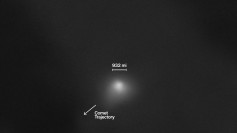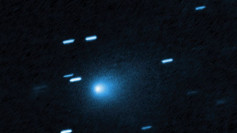The Space Weather Prediction Center, which issued a solar storm watch, has announced that a solar storm might produce a northern lights display to some portions of the upper U.S. on Thursday.
A coronal mass ejection, or CME, is a violent outburst of magnetically charged particles and plasma from the sun's outer atmosphere, the corona, that triggered the solar storm.
CMEs can cause geomagnetic storms that interrupt satellite systems and knock out power grids if they are directed at Earth. The increase of auroras in the regions near the North and South Poles, where these amazing displays take place, is a more favorable side consequence of these phenomena.
It's difficult to forecast where aurora borealis displays will appear, but according to a map on the Geophysical Institute's website, the northern lights could be visible from Great Falls, Montana, to upper Maine.
The CME from Monday is projected to reach Earth on Dec. 23. According to Spaceweather.com, it was caused by a massive M1.9-class solar flare that erupted from a sunspot known as Active Region 2908.
The European Space Agency says the sun has been very active in the last week, with multiple active zones forming on its searing surface in the run-up to Christmas.
The Earth's magnetic field protects us from the more severe effects of solar flares. A powerful solar explosion in 1989 sent so many electrically charged particles at Earth that the Canadian province of Quebec lost power for nine hours.
They can be deadly for an astronaut if they cause harm or interfere with mission control communications, in addition to causing problems for our technology on Earth.
The Sun is currently at the beginning of a new 11-year solar cycle, during which eruptions and flares are expected to become more strong and violent.
The geomagnetic storm caused by the Monday CME is only predicted to be mild. When charged particles from the sun collide with the planet's magnetic field, geomagnetic storms occur. These particles will be redirected above the poles by the Earth's magnetic field lines, which is why we observe auroras in these areas.
The science underlying the breathtakingly gorgeous aurora borealis is a little complex. When electrons from solar storms meet with the highest layers of the Earth's atmosphere, the northern lights become visible to the naked eye.
The Earth's magnetic field leads the electrons in such a way that the aurora creates two ovals roughly centered at the magnetic poles in normal circumstances. During geomagnetic storms, however, the ovals stretch distant from the poles, providing a spectacular sky display for some lucky Americans.





